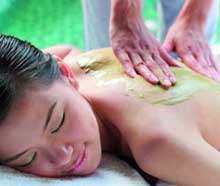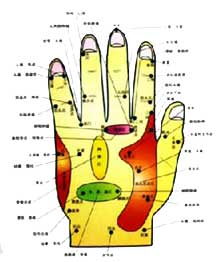Combining massage with herbal medicine has great benefits. Chinese Massage can enhance and speed up the action of herbal remedies. The hands of a masseuse, can detect a wealth of information and touch adds a deeply compassionate level to the act of healing. Liniments and oils used in massage provide an additional channel for herbs to work.
Chinese massage is closely related to acupuncture and is considered to be effective for a similar range of health problems. However, it should not be seen as a poor relation to acupuncture. It is an effective and comprehensive therapy and is regarded alongside herbs, diet, and Qigong as one of the fundamental arts of traditional Chinese medicine.
for a similar range of health problems. However, it should not be seen as a poor relation to acupuncture. It is an effective and comprehensive therapy and is regarded alongside herbs, diet, and Qigong as one of the fundamental arts of traditional Chinese medicine.
There are massage textbooks that date as far back as the Nei Jing, the most ancient medical text (722-481 BC). In the Tang Dynasty (618-907 AD) it is recorded that there were 56 massage doctors at the Imperial Hospital, more than the total of herbalist and acupuncturists. Today massage is widely practiced and taught in hospitals and medical schools and is an important part of primary healthcare.
The development of the Chinese traditional massage came from the cooperation between four groups: doctors who brought the sophisticated medical theories of traditional Chinese medicine (TCM) to massage, martial artists who combined experience of Qi with the ability to heal injuries, Buddhist and Taoist adepts who used massage as an essential part of their spiritual yoga and often blind layman practitioners who offered massage for pleasure and relaxation.
Acupuncture and Moxibustion
Acupuncture is an ancient Chinese method of treating disease or relieving pain by inserting one or more metal needles at a certain point or certain points on the human body. According to ancient Chinese medical records and archaeological findings, primitive Chinese people used bianshi (stone), the earliest acupuncture instrument, to treat diseases. Later, bone and bamboo needles replaced stone ones, and still later metal medical needles, such as bronze, iron, gold and silver ones replaced those. At present, stainless steel needle are used. Nine kinds of needles are used: the round needle, the blunt needle, the three-edge needle, the sword needle, the round sharp needle, the long needle, the large needle, and the arrowhead needle
The basic techniques of an acupuncturist include the way the needle is inserted--'rapidly or slowly, the depth of the insertion, the length of time the needle is left in the body, and the number of needles required for the treatment.
Moxibustion is a traditional Chinese medical technique that involves the burning of  moxa, a small, spongy herb, to facilitate healing. Ancient people noticed that when they sat around a fire the heat not only kept them warm, but also relieved pain. They began using moxa leaves for applying heat. Today, moxa leaves are ignited over certain points on the skin's surface.
moxa, a small, spongy herb, to facilitate healing. Ancient people noticed that when they sat around a fire the heat not only kept them warm, but also relieved pain. They began using moxa leaves for applying heat. Today, moxa leaves are ignited over certain points on the skin's surface.
Acupuncture and moxibustion have many advantages. First, they are useful in treating various kinds of diseases, are therapeutic in internal medicine, surgery, and gynecology, as well as in preventive medicine. Second, they produce prompt and appreciable cures; increase resistance to disease by providing stimulation at certain points, and stop pain. Third, they are easily practiced and mastered. Furthermore, they produce little or no side effects, are generally safe, and can be used in conjunction with other therapies.
With the wide and rapid spread of western medicine in China, people gradually have come to realize that these two different medical systems both have advantages and disadvantages. Combining the two systems gives us the best of both worlds.

